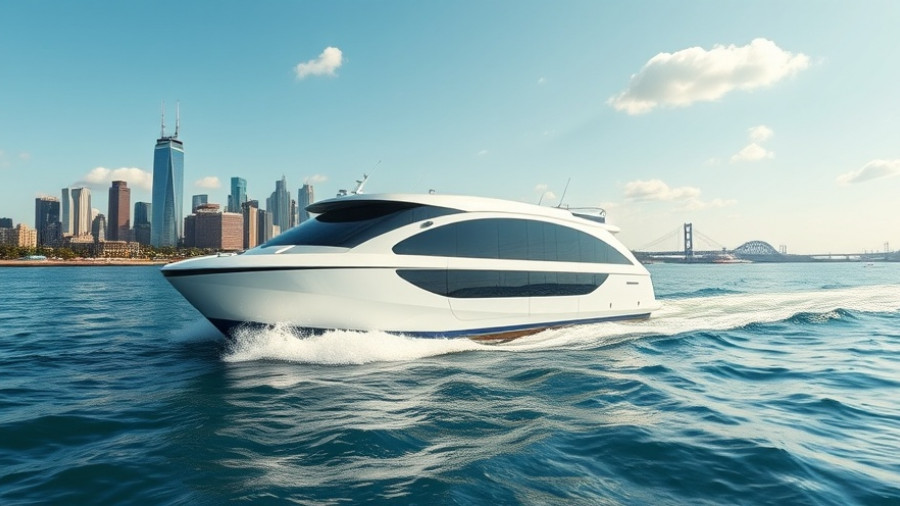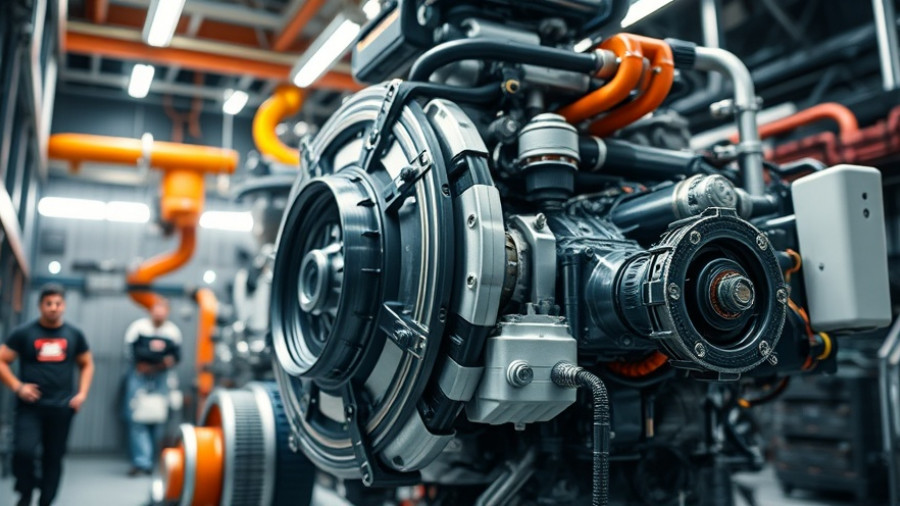
Washington State Ferries Moves Towards a Greener Future
Washington State Ferries (WSF) is taking significant strides towards sustainability with the bidding process for its new fleet of hybrid-electric ferries. Following a prequalification period, the state has received bids from two well-established shipyards: Eastern Shipbuilding Group from Florida and Nichols Brothers Boat Builders based in Washington. This decision marks an exciting shift in marine transportation and reflects the growing commitment to eco-friendly practices in the state's infrastructure.
The Bidding Process and Its Implications
After initially announcing that three shipyards qualified to participate, WSF recently opened the bids, receiving proposals from Eastern and Nichols. According to Steve Nevey, the deputy secretary of WSDOT, evaluating these bids is crucial before proceeding to contract signing. This project is heralded as a step towards a more reliable and environmentally conscious future for Washington's transportation system.
However, the difference in bid pricing has drawn attention. Nichols Brothers Boat Builders proposed a cost of $338.6 million per ferry, far exceeding Eastern’s bid of $251.3 million, which closely aligns with the state’s estimate of $256.8 million. The local yard has urged Governor Bob Ferguson to allow both companies to contribute to fulfilling the state's electrification goals.
Understanding the Cost Disparity: A Closer Look
The significant differences in the bid amounts raise questions about the implications for Washington’s budget. According to reports, even if both Eastern and Nichols were contracted to build ferries, the total expenditure would remain within the state's set budget of $1.27 billion for up to five vessels. This flexibility could potentially bolster local employment and stimulate the economy in Washington.
Experts have highlighted that investing in local shipyards can also have broader economic benefits, including job creation and fostering technological advancements. Sustainable shipping practices not only address emissions but also pave the way for future innovations in marine transportation.
The Importance of Hybrid-Electric Technology
Hybrid-electric ferries represent a crucial innovation in public transport technology. Incorporating such Ferries into WSF's fleet is expected to significantly reduce greenhouse gas emissions, minimize fuel costs, and enhance energy efficiency.
The push for greener transportation options is echoed across the world. Cities in Europe and beyond have already embraced electric ferry systems, setting benchmarks that Washington can aspire to match. Investing in hybrid technology not only addresses environmental concerns but also aligns with global trends towards sustainability in public transport.
Future Outlook: What Lies Ahead?
As WSF moves forward with this pivotal project, stakeholders are encouraged to keep a close eye on the developments. If the bids are accepted, it may take about a year to finalize designs before construction begins, but the anticipation of launching new vessels is already generating excitement.
Community support for such projects can play a vital role in this transition. Advocacy for early delivery incentives and investment in local economies could further enhance the benefits associated with the new ferry fleet.
Conclusion: Toward a Sustainable Maritime Future
The movement towards integrating hybrid-electric ferries into Washington State's public transport is not just about modernizing the fleet; it embodies a commitment to a sustainable future. The bid outcomes will be key to paving the path for cleaner transportation in the region and the state’s ability to adapt to the demands of climate change.
Stay informed on the latest developments as Washington takes significant steps towards an electrified ferry system, blending innovation with essential environmental responsibility.
 Add Row
Add Row  Add
Add 




Write A Comment